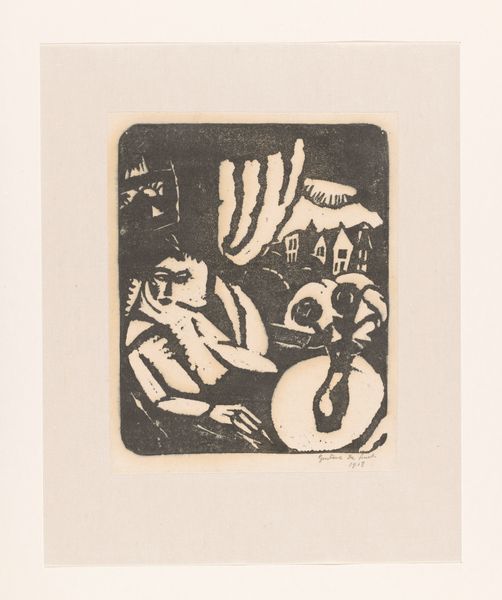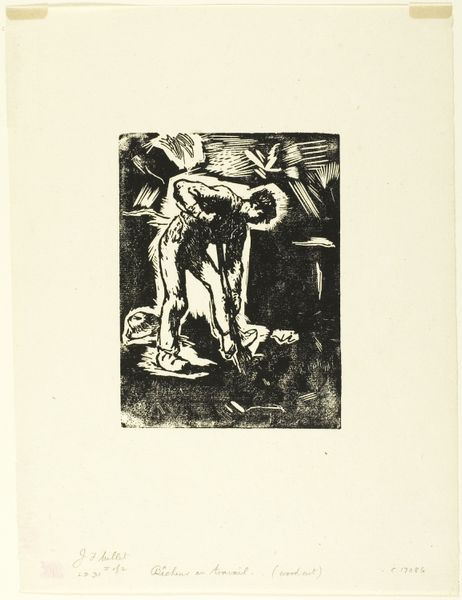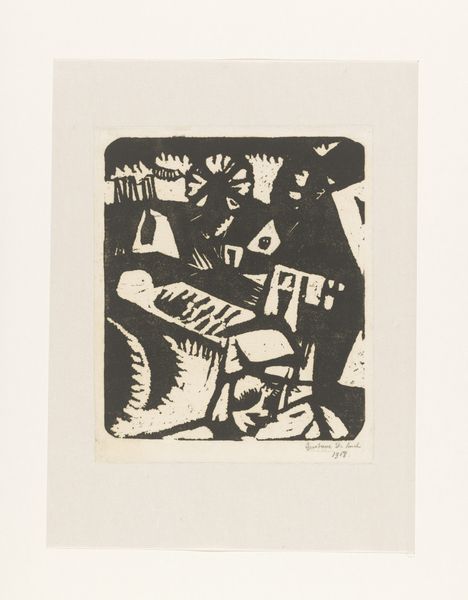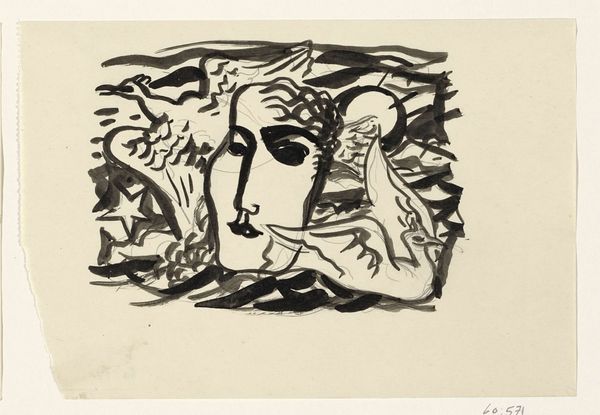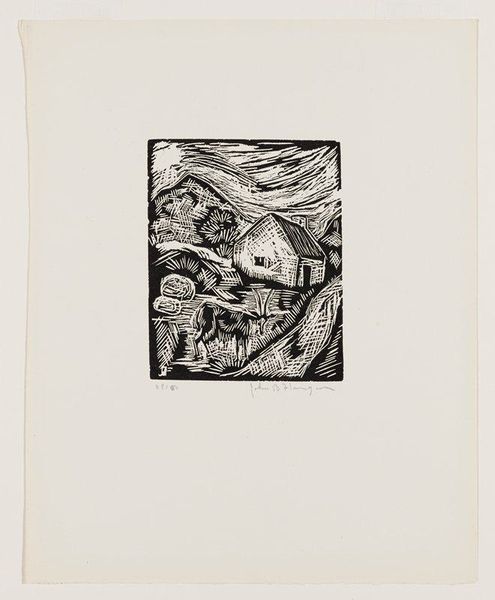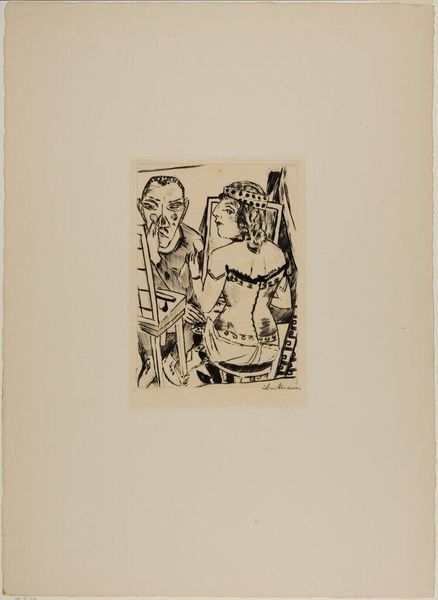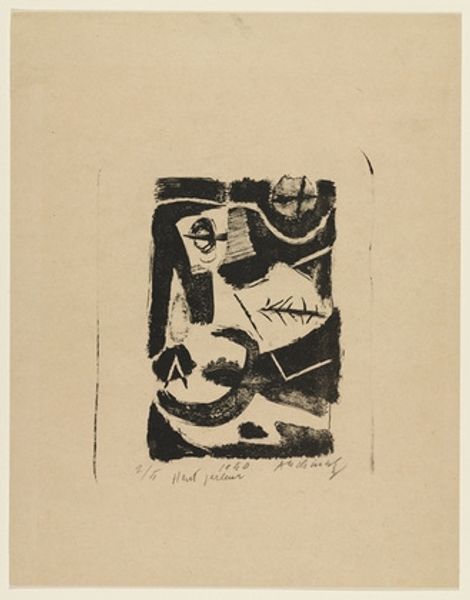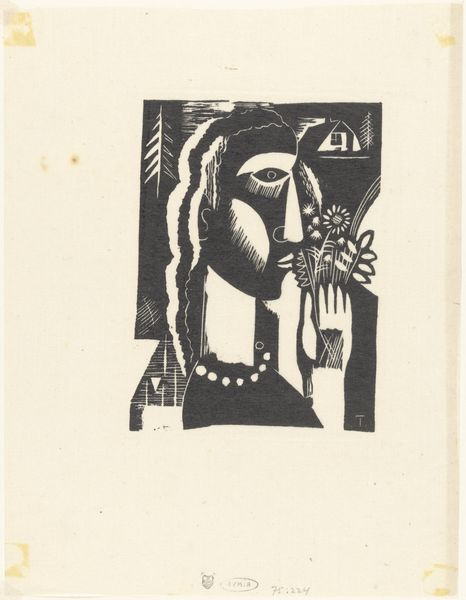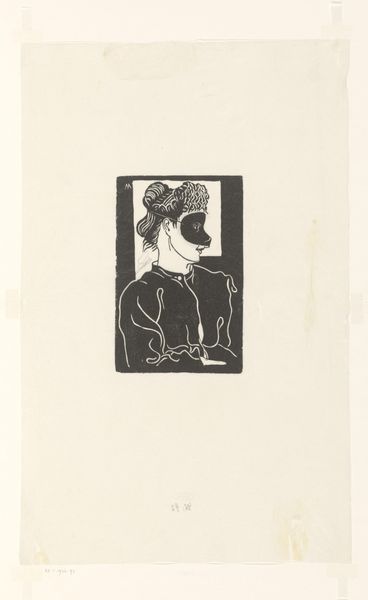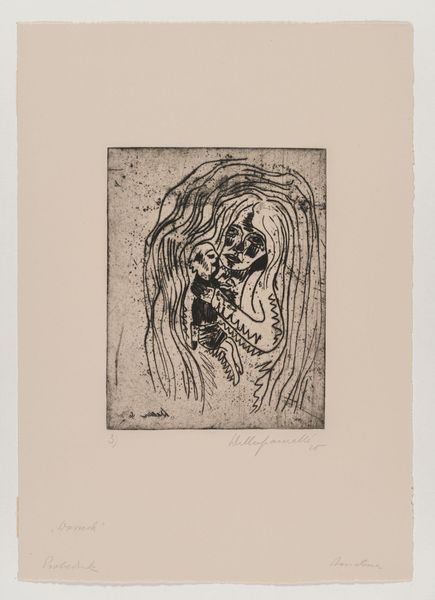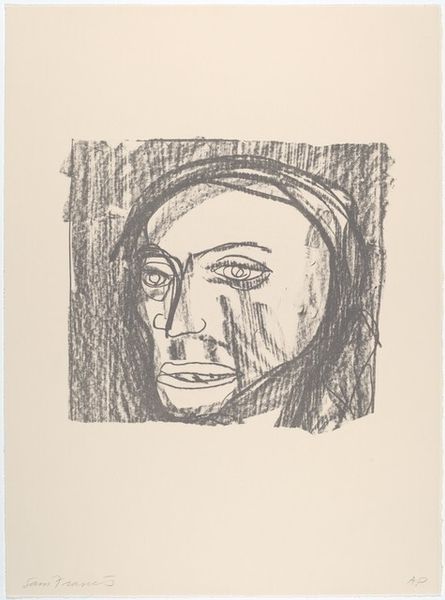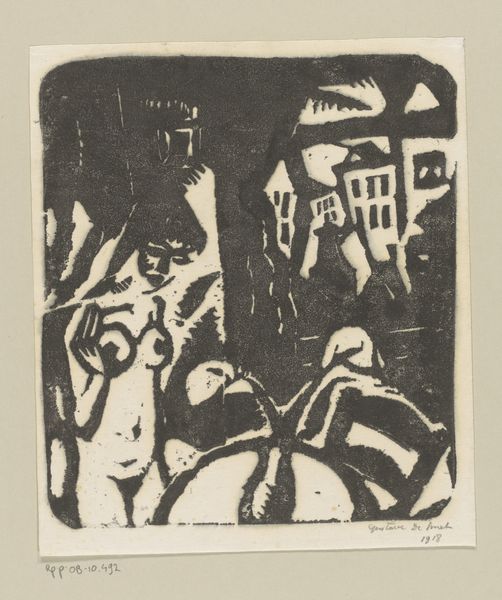
#
negative space
#
germany
# print
#
pencil sketch
#
pencil drawing
#
ink drawing experimentation
#
tattoo art
#
tonal art
#
a lot negative space
#
remaining negative space
#
pencil art
#
doodle art
Dimensions: 14 3/16 x 11 13/16 in. (36.04 x 30 cm) (image)25 3/4 x 18 13/16 in. (65.41 x 47.78 cm) (sheet)
Copyright: No Copyright - United States
Editor: Kathe Kollwitz’s print, "The People," possibly from 1922 or 1923, feels incredibly heavy and somber. The faces seem to emerge from darkness. What strikes you about this work? Curator: Kollwitz made this print in the aftermath of World War I, during the Weimar Republic, a period marked by intense social and political upheaval in Germany. Understanding this context, do the faces tell a story about trauma and societal unrest? Consider, for example, who "the people" are and how they are being represented here. Editor: I notice the hands reaching. Is it about asking for help? I had been thinking more personally, but now I wonder if they could be the voices of a community, perhaps the working class, struggling with hardship. Curator: Exactly. Kollwitz was deeply committed to depicting the suffering of the working class and was heavily influenced by the Expressionist movement, but through a perspective steeped in socialist ideals and feminist consciousness. Notice the gendered portrayal within the crowd. Are these figures symbolic? If so, what might they symbolize, particularly considering Germany’s socio-political condition after WWI? Editor: I didn't focus on gender, but now that you mention it, I notice the prominence of what seem like maternal figures and their almost haunted expressions. This reframes my understanding; it shifts from generalized suffering to the specific burdens and resilience of women during that era. Curator: Precisely. And thinking through her technical execution adds further complexity to interpreting the work. What do the stark contrasts of the medium communicate? Editor: The high contrast amplifies the emotional intensity. It’s less about individual portraits, more about collective experience. Thank you, I am looking at this print in an entirely new way. Curator: And I am reminded of art's power to give visual form to intangible realities and prompt essential dialogue.
Comments
No comments
Be the first to comment and join the conversation on the ultimate creative platform.
